Of all the things AI is increasingly used for in business - insights, reporting, automating workflows, collaborating, among others - content creation is actually the most AI-heavy in 2025. What does that mean? As much as 93% of marketers already use AI content automation to generate content (as opposed to just 81% using AI for insights, for example).
It’s no wonder why. AI content creation automation is fast and convenient - often even free. It’s clear that AI content automation solutions have the power to totally transform your content strategies.
Businesses can use AI tools not only to create content but to scale their entire content strategies, too. Often at low cost and rapid speeds. Plus, AI is getting increasingly smart.
But “smart” isn’t the only metric. Overuse of AI content automation can lead you into all sorts of trouble - not just legal, but in business terms, too.
With that in mind, let’s explore how to scale your content strategy safely and responsibly using AI, while avoiding some of the pitfalls.
- Why AI Alone Won’t Save Your Content Strategy
- How Teams Lose Their Voice Without Realizing
- How AI Supports Multilingual Content Strategies
- The Core Pillars of a Scalable AI-Powered Strategy
- Let AI Repurpose Existing Content Across Formats
- How to Integrate Without Losing Your Brand Voice
- How to Scale Content Creation With AI
- Tools That Power the Workflow (Without Slowing It Down)
- 5 Mistakes to Avoid When Scaling With AI
- Final Takeaways
Why AI Alone Won’t Save Your Content Strategy
Many younger companies, particularly hungry startups, are keen to hand off their content strategy almost entirely to AI. But that’s a mistake.
AI makes mistakes, cuts corners, and can lack the warmth of the human touch. Even the best AI content automation solutions are nothing without expert humans behind them.
Here are some critical AI drawbacks to bear in mind before jumping on the bandwagon:
When AI Works and When It Doesn’t
AI content automation is incredibly useful in the right context. But you’ll notice that the best marketers use AI for certain things (not everything).
Here’s where these tools can really help:
- Simple tasks - there are a lot of “small” tasks that go into content creation, like keyword research, outlines, meta descriptions, content repurposing, or summarizing large texts quickly. AI is great at these things.
- Drafting at scale - almost half of all marketers use AI to draft content. There’s a reason for that: AI content automation solutions can generate first drafts of blog posts, social captions, or email campaigns in mere moments.
- Speed & ideation - getting potentially hundreds of writer’s block-beating angles in seconds has never been easier.
However, there are a few areas where AI doesn’t, and perhaps never will, work:
- Nuanced narratives - it’s a tricky area of study, but research suggests humans can identify AI content around 60% of the time. Why? AI content can be lifeless and flat. It’s not great at “being human”, which is a problem when it comes to brand voice and cultural context.
- Speed over depth - AI is fast, no doubt about it. But that often comes at the price of clarity and originality.
- Final polish - you should never publish AI content without first reviewing it. Humans should always refine, fact-check, inject originality, and ensure quality before publishing.
How Teams Lose Their Voice Without Realizing
Brand voice is crucial. Having a distinct “persona” makes sure you appeal to your target audience and fosters trust. Multiple studies show that the vast majority of consumers consider trust a top priority when buying.
AI can therefore be a risk here. You can train AI content automation tools on your previous content (if you have any), but as you rely more and more on AI, more and more of what it “mimics” is AI itself. This can dilute your brand voice over time.
Likewise, you might find your tone drifting across different channels.
All this can happen, even with oversight. But some teams don’t even try to find inconsistencies. AI templates and AI-first workflows are extremely prevalent.
Such tools save a lot of time and can be incredibly useful, but they can also weaken your content over time.
The Cost of Speed Without Direction
One of the main appeals of AI content automation is speed. AI tools are hundreds of times faster than humans. But does faster turnaround always mean lower costs?
Not necessarily. Businesses might save money in the short-term, but going too fast can actually cost you money in the long-run.
Here’s how:
- Misaligned content - if your content loses its brand voice or isn’t consistent across channels, you’ll slowly ebb away at your audience/customer base. Content that doesn’t convert equals wasted budget, no matter how fast it was produced.
- Lack of measurable goals - in theory, you could publish a dozen articles a day with AI help. However, that content needs to work - i.e., to increase conversions, generate leads, secure consultations, etc.
- Lost leads - leads can sense a lack of personal interest/connection. AI may be able to mimic interest, but people can soon be turned off if they feel a lazy business is outsourcing all communication to a chatbot.
How AI Supports Multilingual Content Strategies
Consumers much prefer to shop and read content in their native language without relying on clunky Google translate options. That’s why businesses are increasingly seeking to translate their content “at source”. Around 42% of businesses already do this!
Here’s how AI content automation solutions can make a difference:
- Super fast, super scalable - AI can translate content into multiple languages quickly. Ideal for reaching new markets fast.
- Content localization drafts - AI can adapt tone and formality for specific regions with decent accuracy.
- Consistent brand messaging - Google translations often lack accuracy and warmth. AI can translate while also retaining brand voice/messaging.
- SEO across markets - let’s not forget about SEO, either. SEO content automation AI tools can localize keywords in target languages.
This is all great. However, we always recommend that humans have the final say on all multilingual AI content!
The Core Pillars of a Scalable AI-Powered Strategy
There are a few important principles you’ll need to stick to if you’re going to integrate scalable AI content automation into your workflow.
These tips should keep your content aligned and pitch-perfect:
Clear Content Positioning
We don’t recommend starting out with AI content creation from day one. Instead, take the time to fully define your:
- Brand
- Target audience
- Core messaging
AI isn’t a self-governing strategist. It does what it's told, so it will always work best when it has a clear direction!
Funnel-Aligned Content Mapping
You shouldn’t simply churn out a bunch of AI content and expect to see results. You’ll still need to carefully and thoughtfully map different content types to specific funnel stages. Here’s what tends to work well:
- Top-of-funnel = blog posts
- Mid-funnel = case studies
- Bottom-funnel = product comparisons
All AI content should serve a specific purpose. The right thing in the wrong place (even if it’s polished) won’t convert!
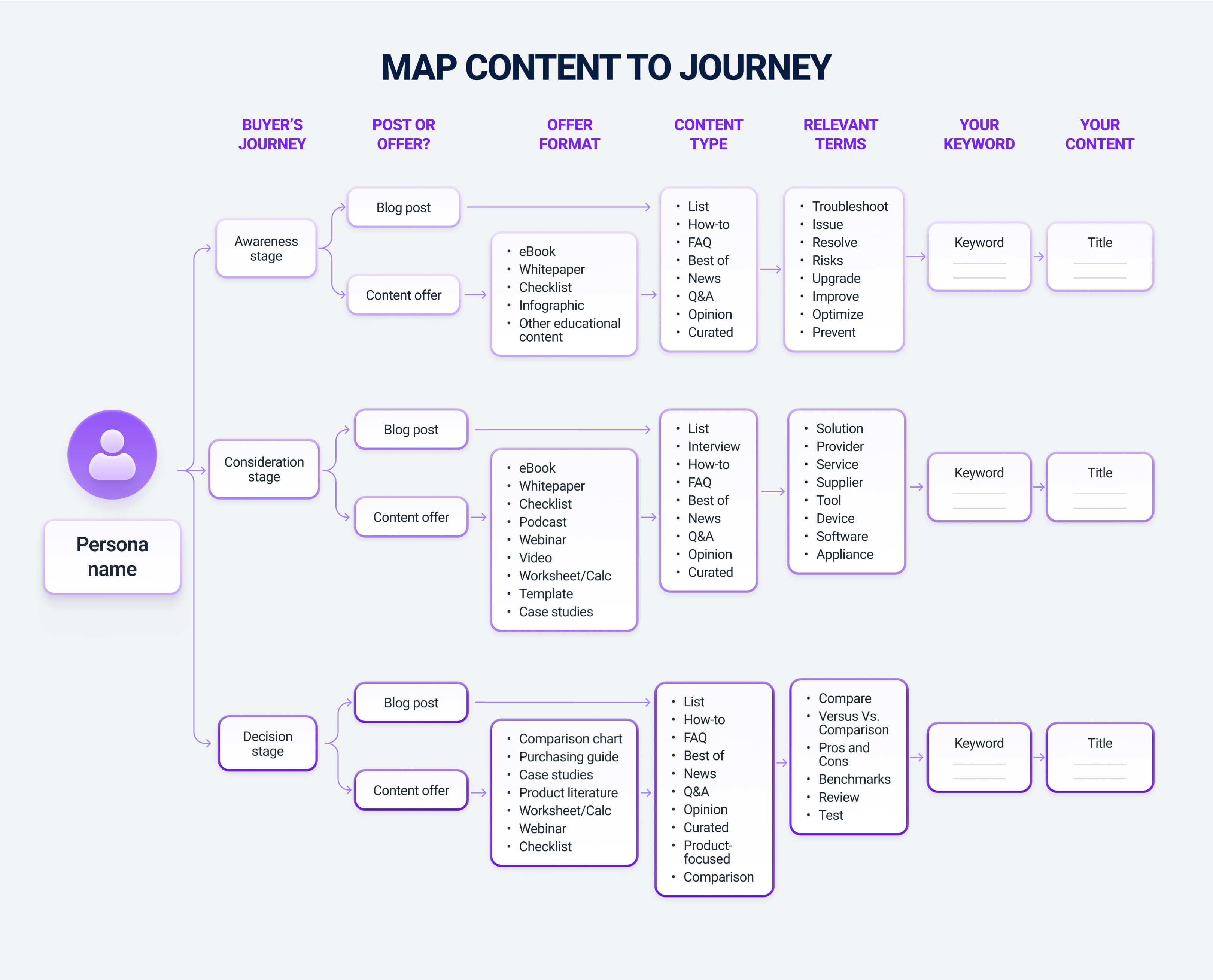
Templates and Modular Systems
We recommend developing some well-thought-out yet repeatable content frameworks to speed up your process. Think blog post structures, email sequences, or social formats. It’ll save a lot of time when AI can simply plug into what you know already works.
Plus, modular systems allow you to generate high-volume content without reinventing the wheel.
However, don’t rely too much on templates. Always check and refine content depending on its unique needs!
Internal Collaboration Between Strategy and AI Ops
AI isn’t a solo player. Success comes when content strategists and AI operators collaborate. Strategists provide:
- Context
- Voice
- Goals
AI teams handle:
- Tooling
- Automation
- Iteration
This synergy keeps quality high while unlocking speed.
Smart Resource Allocation
Smart delegation is what makes scaling sustainable, with or without AI. If you’re using AI content automation solutions, let them handle what they’re good at (namely drafting and ideation, even repurposing).
Delegating these tasks to AI frees up your team’s bandwidth for the things they excel at:
- Editing
- Brand nuance
- High-stakes storytelling
Let AI Repurpose Existing Content Across Formats
One of the main underreported benefits of AI content automation has to be its ability to repurpose content. But what exactly does this mean?
Well, there are many tools out there that can help marketers transform a single piece of content (say, a blog post) into multiple pieces of other content (say, social media posts) with just a single prompt. Even ChatGPT can do this.
This essentially means you’re converting a single asset into multiple touchpoints across your funnel and massively increasing your ROI.
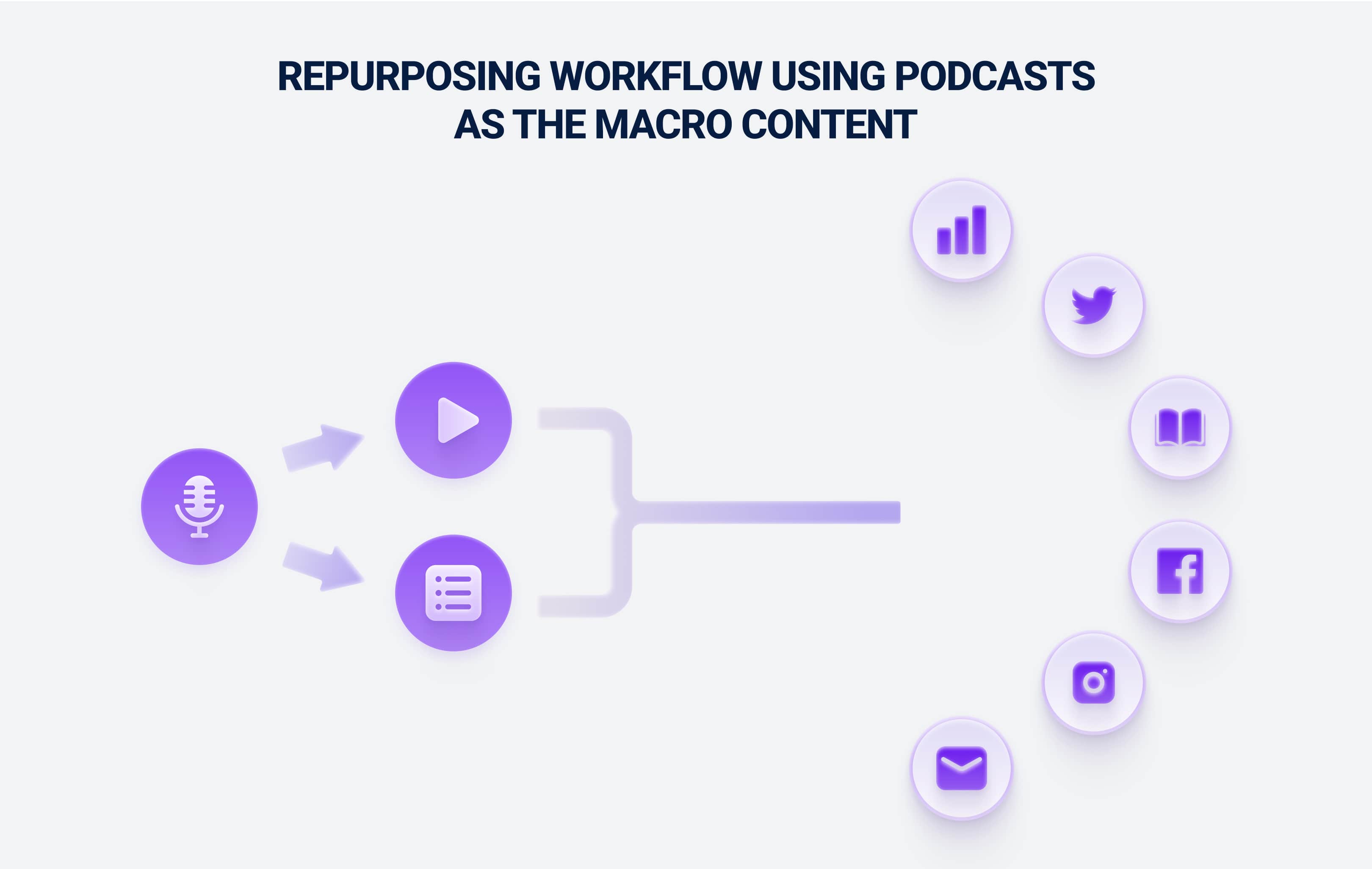
Let’s take a few examples to show you how this really works:
- Blog post > social content - AI extracts key points, quotes, or statistics from long-form content and rewrites them as LinkedIn carousels, X threads, Instagram captions, YouTube Shorts scripts, and more.
- Webinar > blog & email - some AI tools can transcribe live meetings. You can then use that transcript to summarize the webinar and turn it into a blog post recap or a post-webinar email nurture series.
- Case study > video script - AI tools can restructure a case study into a short video script that you can put on your website.
As always, all of this will require oversight. Never let an automation tool handle this and publish content without making sure everything is 100% accurate and brand-consistent.
How to Integrate Without Losing Your Brand Voice
AI content automation is your ticket to faster marketing. But speed isn’t as important as a consistent brand voice. A recent study found that 82% of customers are more loyal to brands when they feel emotionally connected to them. So creating a consistent brand personality is key.
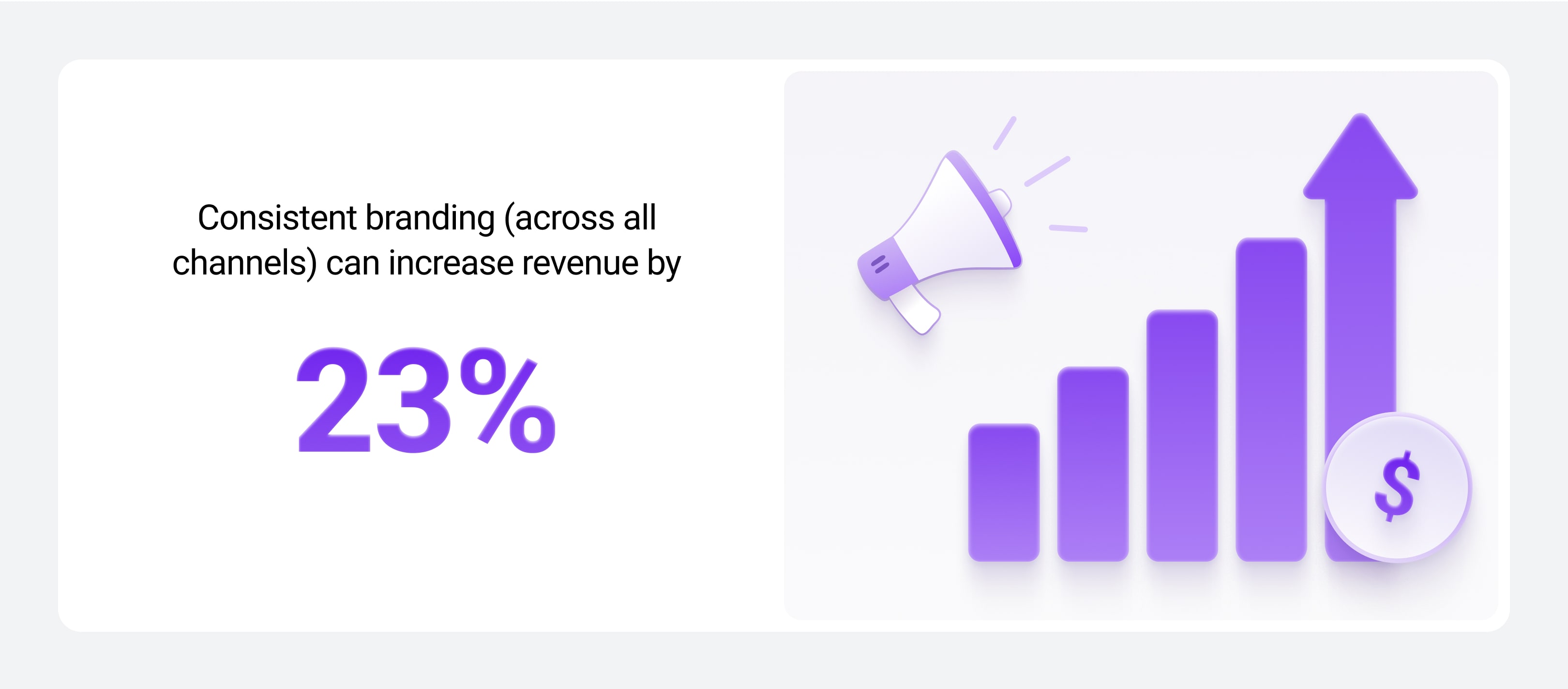
Here’s how to sidestep the potential pitfalls of AI content marketing while keeping your brand voice personal:
Develop and Train a Brand Voice System
You need to make sure AI is preserving your brand voice. But it can’t do that if it doesn’t understand your brand voice to begin with.
It’s very important to have a solid catalog of human-made material that documents your brand’s tone and key messaging principles before you start to train AI tools. When you do, you can feed that material into your AI workflows via:
- Style descriptors
- Sample outputs
- Clear do’s and don’ts
Use Prompt Templates for Consistency
Personalized prompt templates can serve the double purpose of speeding content creation up while also sticking to your principles. Whether it’s a blog intro, social caption, or email body, structured prompts help AI stay consistent across different content types and teams.
However, they absolutely have to reflect your brand tone and format expectations and should ideally be made 100% by humans. This keeps humans “in the loop” when it comes to AI content.
Build an Internal AI Style Guide
Chances are, you won’t yourself be creating the AI marketing content if you’re a business owner. So, it’s essential that every member of your team who’s using AI fully understands the importance of brand voice, too.
We recommend complementing your human brand guide with an AI-specific version. Include:
- Preferred phrasing
- Banned words
- Voice modifiers (“friendly but authoritative,” for example)
- Example prompts
Trust us when we say this document can save you a whole lot of time-consuming back-and-forth everyone would rather live without.
Review and Refine Before Publishing
AI-generated content should never go live without human review. Always have editors check for things like tone alignment and originality.
This is a final “human layer” that protects your brand voice and ensures you’re not publishing run-of-the-mill or off-brand content.
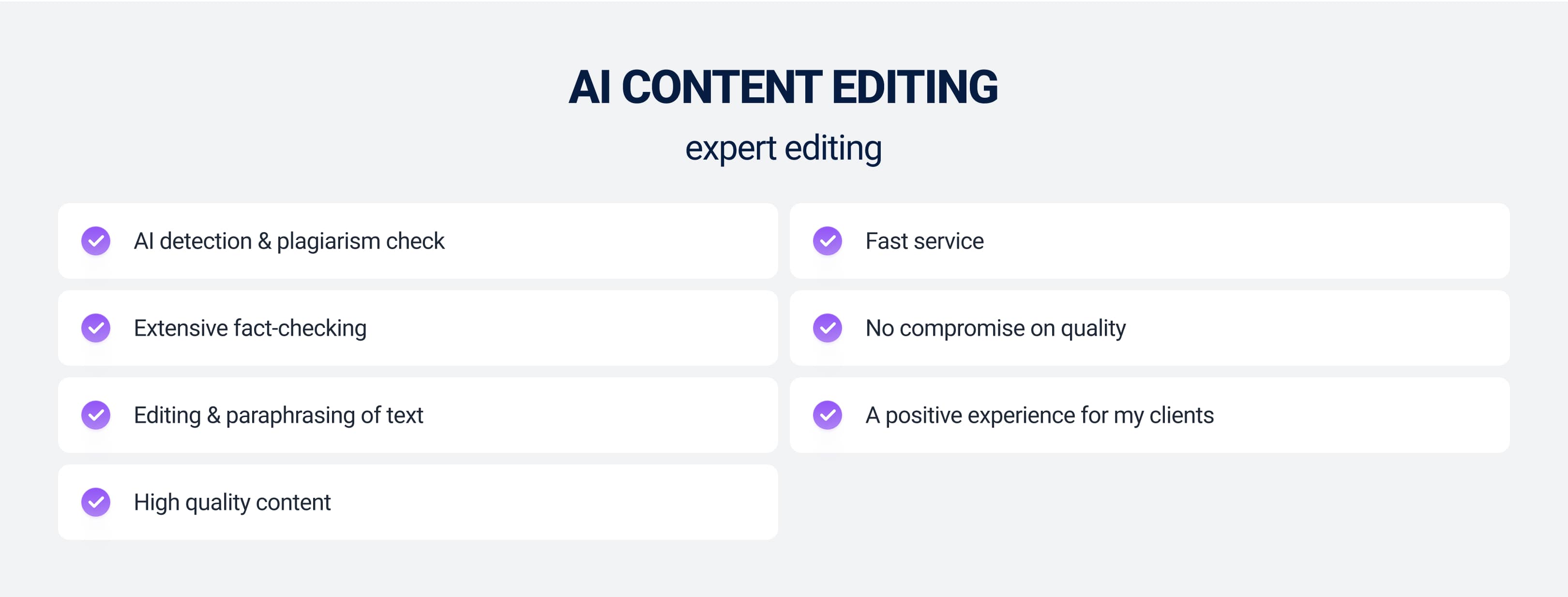
Create a Swipe File of Brand-Accurate AI Outputs
It’s a great idea to keep a log of the AI content you like the most (and which performs best). This is called a “swipe file”. It’s handy for the AI itself as it can train on successful content. But it’s also handy for your team. Swipe files can be an invaluable resource for:
- Training new prompts
- Onboarding new team members
- Improving future outputs
How to Scale Content Creation With AI
So, you’ve mastered AI content generation. Now, it’s time to focus on scaling your content strategy. This is where AI really shines - producing higher volumes of content with lower input.
Here’s how we’d recommend scaling your content strategy with AI content automation:
Turn One Core Idea Into 10+ Assets
Turning one piece of existing content into multiple assets quickly is one of the main benefits of AI automation. But you need to be careful.
The key is to reformat, not just reword. Pay close attention to that as you follow these steps:
- Start with a strong idea - not everything is suitable for repurposing. You really need a meaty piece of content that’s absolutely packed with value to start with. It should solve a real pain point or answer a key question for your audience.
- Repurpose by format and channel - choose exactly how best to repurpose your content. Great ideas include:
- Blog
- Video
- Social
- Visuals
- Downloadables
- SEO
- Internal enablement
- Use tools - ChatGPT may be great for rewording/restructuring some content into a new format. But it doesn’t always go far enough. Sometimes, we need other tools for other aspects of repurposing. Our top picks include:
- Pictory & Lumen5 - generate explainer videos or reels
- Canva Magic & Venngage - design visual formats from text summaries
- Kit & Jasper for Email - repurpose blog headlines and CTAs into newsletters
- Opus Clip & Quso.ai - auto-cut webinars/podcasts into viral clips
- Avoid duplicating - duplicate content is a bad look. It gives the wrong impression. Although core ideas can be the same across channels, each should bring something of value to that specific audience. We recommend using a content database like Airtable to keep track of all your content output. You might also want to assign approval loops to flag when content is reused or overlapping.
GROW YOUR INSTAGRAM FOLLOWING VIA OUR CELEBRITY CAMPAIGNS
Leverage the power of the worlds A-list celebrities to grow your Instagram every month
VIEW CAMPAIGNSBuild a Weekly AI-Driven Content Engine
At some point, you’ll have to turn your strategy into a system. You want your whole ideation-to-distribution workflow to happen in sync and with purpose.
Follow the steps below to scale 3x–5x output per week without sacrificing quality or burning out your team!
- Strategic planning - first, you should think about what you actually want to say and who you’re saying it to. ChatGPT or Claude can help here. First, identify a few core themes based on your campaigns or audience questions. Then, ask AI to generate topic clusters from one keyword. It can even suggest formats for you!
- Batch prompting for high volumes - you don’t have to create one piece of AI content at a time. It’s super easy to develop multiple assets in one focused sprint. Simply use prompt templates like:
- “Turn this blog post into a 5-part LinkedIn carousel”
- “Extract 3 tweet hooks + 1 newsletter CTA from this outline”
- “Reframe this idea for video in under 90 seconds”
- Automated distribution - AI can help you deliver across platforms with almost no friction at all. Tools like these can help with scheduling and distributing:
- Scheduling - Buffer and Hypefury
- Auto-sending - Zapier and Make
Here’s an example of a solid AI-powered editorial content calendar:
| Week | Core Theme | Blog | Social Posts | Video | |
|---|---|---|---|---|---|
| W1 | AI for content strategy | ✅ | Carousel, thread | ✅ | Weekly digest |
| W2 | Scaling thought leadership | ✅ | Quote card, reel | ✅ | Case study CTA |
| W3 | Multilingual content | ✅ | Swipe file, poll | ✅ | SEO tips |
| W4 | Repurposing workflows | ✅ | Meme + insights | ✅ | Checklist download |
Systematize Long-Form With Repeatable Blocks
There’s no need to waste time starting from scratch each time you generate AI content. AI can make content quicker and better with repeatable “block” (frameworks to build within).
These repeatable blocks keep your tone and messaging consistent across content and also helps AI avoid filler. Plus, it makes it much easier to scale your content strategy.
The first step is to build out a library of pre-approved blocks like so:
| Block Type | Use Case | Example |
|---|---|---|
| Intro Templates | Hook + problem + preview | “Struggling to convert leads? Here’s how [topic] solves it…” |
| FAQs | SEO + trust | “Q: What’s the ROI of AI in content?” |
| Comparison Tables | Feature breakdowns | “AI vs. Human Copy: What’s the Tradeoff?” |
| CTAs | Drive next action | “Download the free checklist here” |
| Key Takeaways | TL;DR for scanners | Bullet summaries at the end |
The great thing about these blocks is you can also plug them straight into prompts. Always include them as part of a wireframe (as opposed to a blank prompt) like this:
“Using the following structure, write a 1,000-word article on [Topic] for [Audience]. Use our tone: [Friendly, Expert, etc.]. Include the following pre-approved FAQ and CTA blocks…”
Use AI for Headline and Hook Variants
Which part of your content requires the closest attention? You could argue it’s the headline. After all, headlines and hooks are what drive clicks.
Headlines have a much higher read rate than general copy. Around 80% of people read headlines instinctively but only 20% go on to read copy. So, your headline is your chance to grab a lead.
One of the most obvious ways to use AI in your headline strategy is to instantly generate dozens of headline and hook variants to choose from/test. Each can offer a distinct - yet relevant - angle which could impact overall CTR enormously.
Here’s a prompt we gave to ChatGPT:
“Give me 10 subject lines for a newsletter about AI in content marketing, targeting startup owners and marketing directors, with a tone that’s authoritative yet friendly.”
Here are just three of the 10 subject lines it generated:
- "The AI Toolkit Every Marketing Director Should Be Using"
- "Outsmart the Competition: AI Strategies for Agile Marketing Teams"
- "How to Scale Content Creation Without Burning Out Your Team"
Even though each of these ideas takes a slightly different angle, you should always make sure the generated hook is reflective of the actual content - as well as your brand as a whole!
Group Production for Evergreen Assets
It’s a smart idea to create clusters of interconnected, long-lasting content in a single go rather than producing isolated pieces over time. This is called “group production” - essentially, you’re building an entire content ecosystem at once.
Here’s the best way to do it:
- Select a core evergreen page that answers a broad, high-intent question like “What is AI Content Strategy?”
- Use AI to identify 5 - 10 subtopics.
- Ask it to generate outlines for each supporting post.
- Draft FAQs, glossary terms, or comparison pages that link back to the main hub.
- Edit and publish.
It really is as simple as that.
The best part is, it’s self-sustainable. You can easily use AI to generate appealing internal anchors that link to supporting posts in seconds.
However, some businesses can run the risk of becoming “content farms” with this technique. High quantities of low-quality content can actually harm your SEO as it reduces your E-E-A-T score, crucial for showing up in Google SERPs.
To avoid this, make sure you:
- Repurpose, not repeat
- Audit and score content
- Map your intentions for each post
- Prune out old and duplicate content
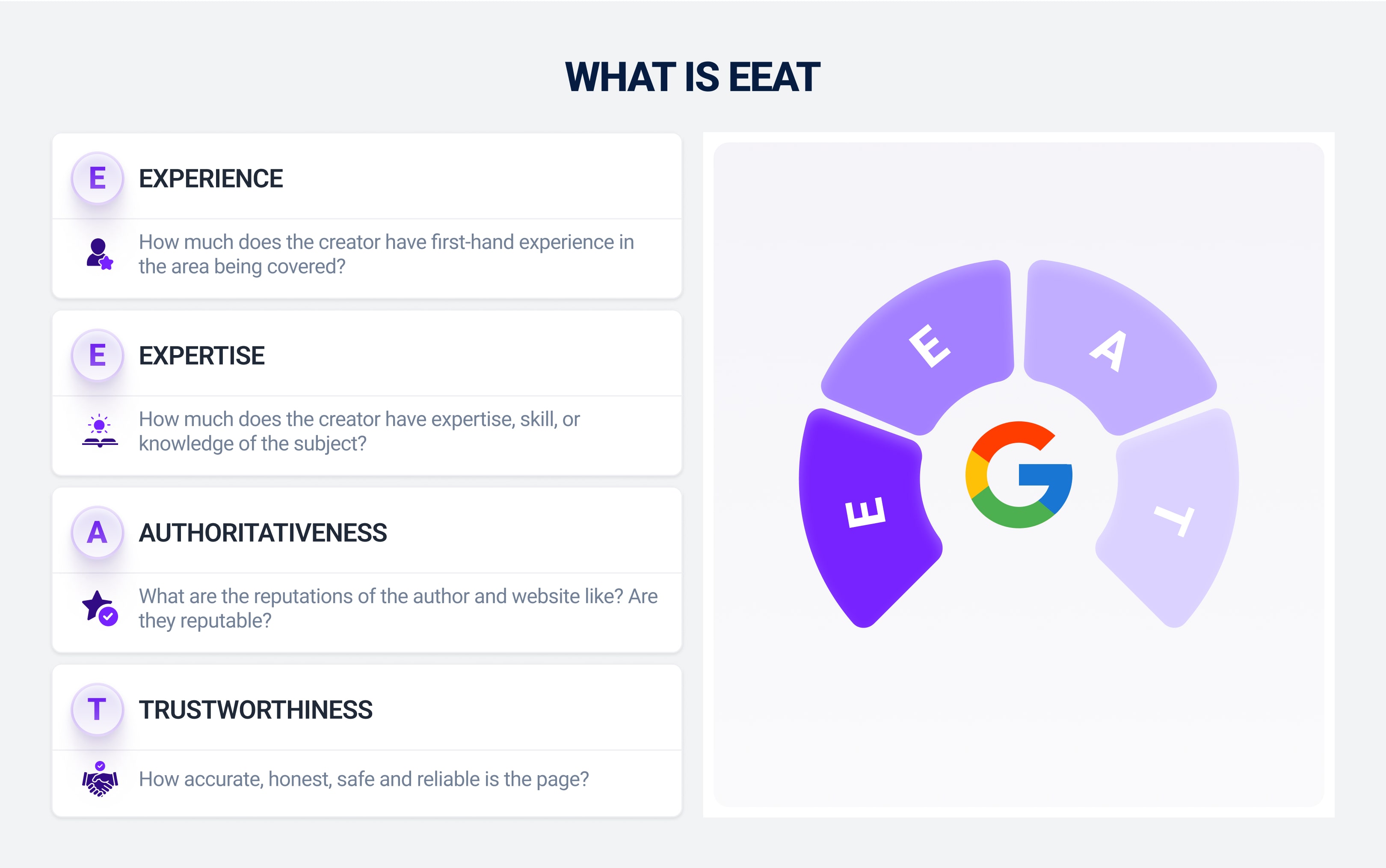
Tools That Power the Workflow (Without Slowing It Down)
The sheer volume of incredible AI tools popping up every day can make it hard for content marketers to separate the wheat from the chaff.
So, we’ve done the legwork for you. Here are the AI content automation solutions you should be looking at, separated by category:
AI Writing and Content Assistants
These are your “first base” tools - the tools that actually write outlines and drafts:
- ChatGPT / Claude / Jasper - long-form generation and rewrites
- Copy.ai - prebuilt marketing templates
- Surfer / Frase / Clearscope - SEO and content scoring
- Headline Analyzer by CoSchedule - testing your headlines
Repurposing and Format Expansion
Here are the tools that will help you expand your content across channels:
- Opus Clip / Descript - convert longer videos into short clips
- Canva Magic / Figma AI plugins - carousels and graphics
- FeedHive - turn blog content into social hooks
- Scribe / DocsAutomator - visual SOPs or internal guides
Workflow and Editorial Management
Manage your AI content automation project easily:
- Notion / Airtable / ClickUp - editorial calendars and reviews
- Content Harmony / Narrato - content briefs and strategy scoring
- Trello + ChatGPT Plugin - prioritize and summarize content cards
Automation Tools for Publishing and Updates
These will streamline your content publishing like never before:
- Zapier / Make - content flow between tools
- WordPress AI Plugins - internal links, CTAs, schema, and summaries
- Buffer / Hypefury - schedule and publish across channels
- Screaming Frog + GPT - auditing content gaps and suggesting rewrites
Voice and Brand Customization
Keep your brand voice fresh and consistent:
- Writer / Jasper Brand Voice - AI assistants trained on your tone and rules
- Prompt Perfect - reusable prompts that match your voice
- Swipe files + AI prompt docs - high-performing hooks and CTA patterns
5 Mistakes to Avoid When Scaling With AI
AI content automation represents enormous possibilities. But in the wrong hands, AI content can be more damaging than traditional content.
Google’s E-E-A-T (Experience, Expertise, Authoritativeness, and Trustworthiness) guidelines don’t prohibit AI content. However, it does mean that content that’s not, say, fact-checked or published by experts in the field gets “pushed down”.
So, to make the most of AI content automation, avoid these mistakes:
Mistake #1: Letting AI Drive Strategy
You should use AI to act on your instructions. But you can’t let AI make its own instructions. Everything from content topics and positioning to messaging direction should be down to your human teams.
Without your input, you’ll end up with surface-level content that doesn't align with business goals or audience intent.
Mistake #2: Underestimating the Cost of Poor Quality
Fast isn’t the same as good. Your goal is quality content that converts. So why waste your time with off-brand and inaccurate content that doesn’t go anywhere, no matter how fast it was to create? Such content can actually do more harm than good.
Always edit and optimize AI output before publishing.
Mistake #3: Using One Prompt for Every Format
Generic prompts that “get the job done” but don’t actually offer anything valuable. Using AI doesn’t change the golden rule that you have to offer value.
Each content format requires a different structure and tone, so always use format-specific prompt templates!
Mistake #4: Not Auditing AI Outputs Regularly
Many businesses think they have a winning AI content automation strategy in place and simply sit back and watch it go. But that’s a mistake. AI doesn’t learn from publishing. It’s essential to incorporate feedback loops into the process, otherwise your content could “drift” and duplicate.
We recommend checking everything over - even already published content - at least quarterly (preferably monthly).
Mistake #5: Thinking AI Removes the Need for a Team
Startups might be tempted to see AI as a low-cost alternative to human hires. However, do that and you’ll soon see why smart AI users don’t. Humans are essential for strategy and oversight. Eliminate them and you’ll eliminate the guardrails that keep your brand and your profitability secure!
Final Takeaways
AI content automation is a big new world. There’s lots to explore, but also lots to be wary of. And it’s clear that wherever you stand on AI content, it’s totally transforming the world of content marketing.
If you follow our guide, you’ll unlock the power to:
- Speed up your content generation
- Retain brand voice and content quality
- Build foolproof AI content workflows
- Reach more audiences with one idea
- Convert customers more efficiently
The key takeaway, though, is perhaps this: humans are central to everything we’ve spoken about today. Talented marketing professionals will always be crucial for strategy and quality control.
To witness the powerful combination of AI with marketing professionals first-hand, why explore what Influize has to offer? We’re a leading digital marketing agency that can take your content beyond what you thought possible.
Frequently Asked Questions
How do I ensure quality control with AI-generated content?
You can take control of both the before and after process. Don’t just let AI produce what it wants; before you start, feed it the right examples and the right prompts. After the content is generated, be thorough in your editing and fact-checking.
How do I integrate AI content tools into my workflow?
The first step is to separate your content process into stages (ideation, outlining, drafting, editing, repurposing, publishing). From there, choose one or two repetitive, high-volume tasks within a stage. Let’s say headline variants.
Choose a headline variant tool and try it out with a single project. The key is to think of content tools like co-pilots. Over time, they can take more responsibility, but start things slowly.
Is AI-generated content compliant with search engine guidelines?
Yes. At least, it is in theory. Google’s guidelines don’t penalize content simply because it’s AI-generated. However, they do penalize content that isn’t backed by experience, doesn’t show any expertise, isn’t authoritative, and isn’t trustworthy. So AI content that’s not overseen by humans can be penalized.

